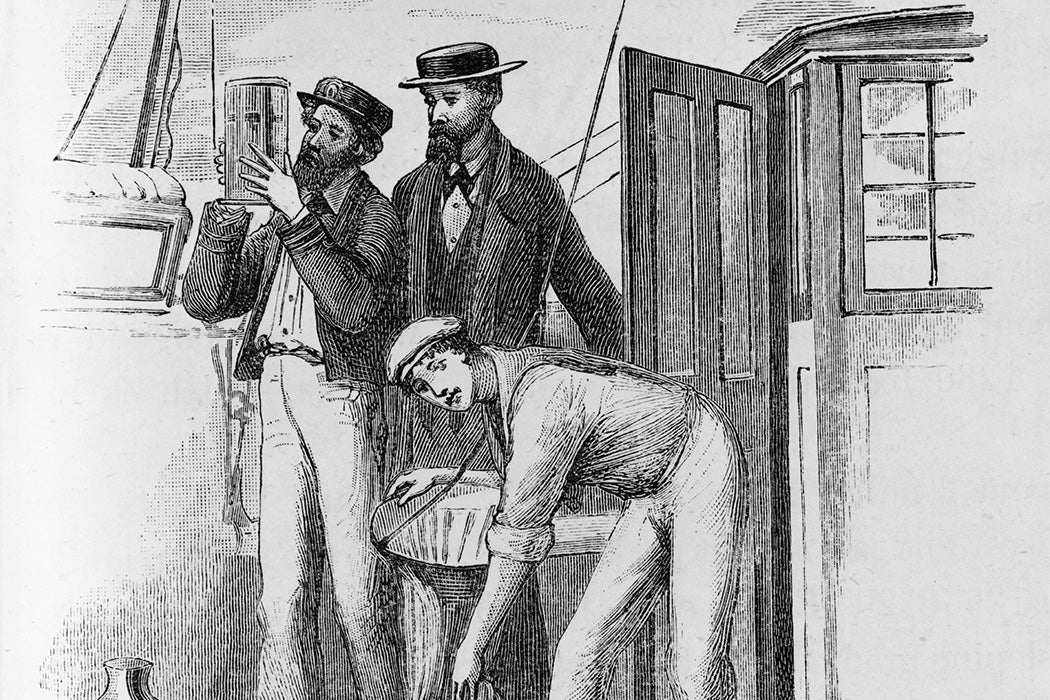In the 1870s, a group of scientists embarked on HMS Challenger for a four-year mission. They circumnavigated the globe, collecting data and dredging up strange creatures. The expedition is frequently cited as the beginning of modern oceanography. According to historian Antony Adler, Challenger also teaches us something important about how scientific vessels changed over time.
Ships like Challenger tend to put diverse groups of people into close proximity for extended periods. Adler explains that when British and French scientists took to the seas in the eighteenth and nineteenth century, they began to transform ships to suit their purposes. As the ships transformed, so did the relationships between the scientists and the rest of the crew.
Adler builds on the work of Richard Sorrenson, who argued that ships themselves became scientific instruments in the Age of Exploration. As crews charted their position over time, they revealed coastal outlines. British and French expeditions mainly prioritized “mapping and territorial expansion,” writes Adler, and the ships were primarily Navy vessels. In one instance, they even used the timing of gunfire between ships to measure distances.
Scientists themselves had very little influence. They were given small spaces, and they sometimes came into conflict with their captains about the use of space on the ship.
“Modifications, or resistance to modification,” writes Adler, “reveal the relative status of a ship’s users insofar as design for one usage took precedence over other possibilities.” Over time, scientists gained status on some missions. By Challenger, they were running the show.
Royal Navy captain George Nares and scientist Charles Wyville Thomson led the mission. Nares and Thomson modified the navy ship heavily, removing guns and adding new spaces dedicated to science. They were creating a laboratory at sea.
In the eighteenth century, Adler explains, “the term ‘laboratory’ was gaining general currency.” These were controlled spaces, both in terms of scientific practices and social access. Onboard Challenger, these spaces allowed the “scientifics” to bring these practices directly into the field.
They had to account for space limitations, a rocking ship, and variable environmental conditions. They used clamps to fix microscopes and other instruments to tables. Open flames, kept level with a clever gimbaled platform, heated chemical sand-baths. Scientists dissected animals and chemically analyzed water samples in their tiny labs. There was a danger that the rest of the crew would feel disconnected from this work.
Weekly Newsletter
Nares and Thomson realized this and took steps to counteract the insular nature of the lab work. Thomson gave lectures to the crew, and they all ate together. An “etiquette of mutual acknowledgement” developed, Adler explains—a significant change from the social dynamics in previous eras.
To Adler, Challenger was one step in a gradual evolution from “ship as instrument” to “ship as laboratory.” But in recent years, some research vessels have become platforms for the collection of data through remote sensing. In Adler’s view, many ships today are now “invisible technicians,” which brings its own changes to shipboard culture and scientific practices.







